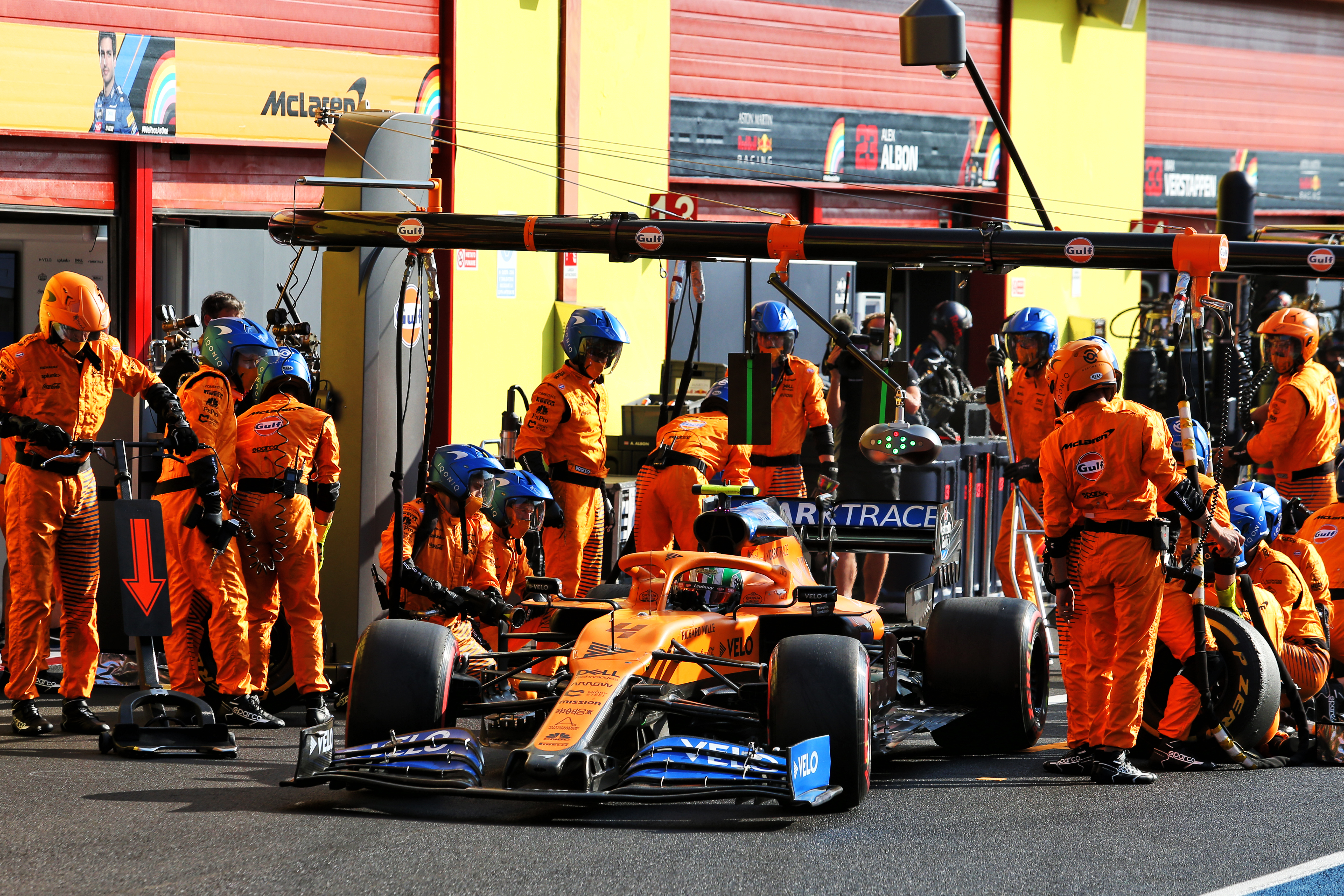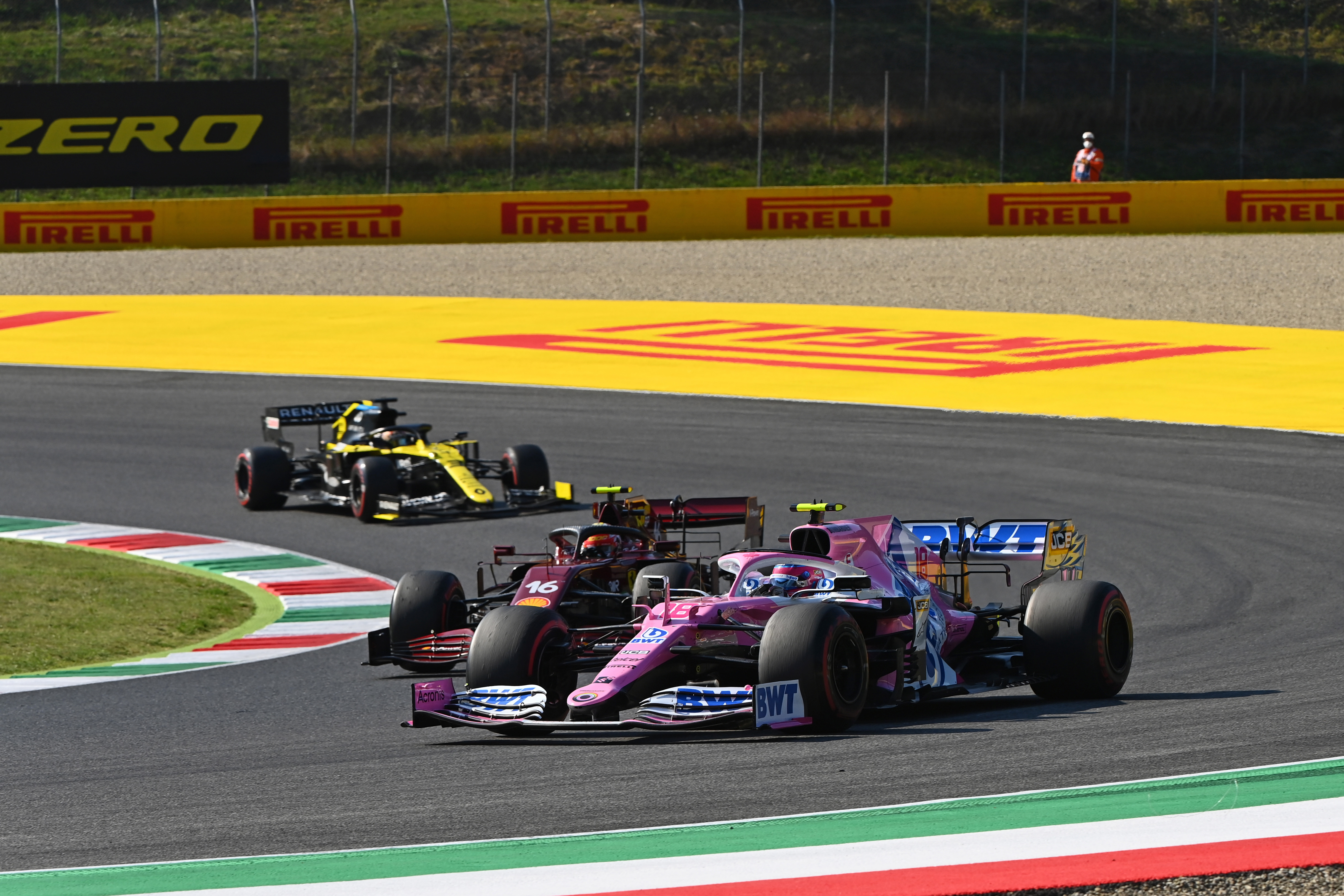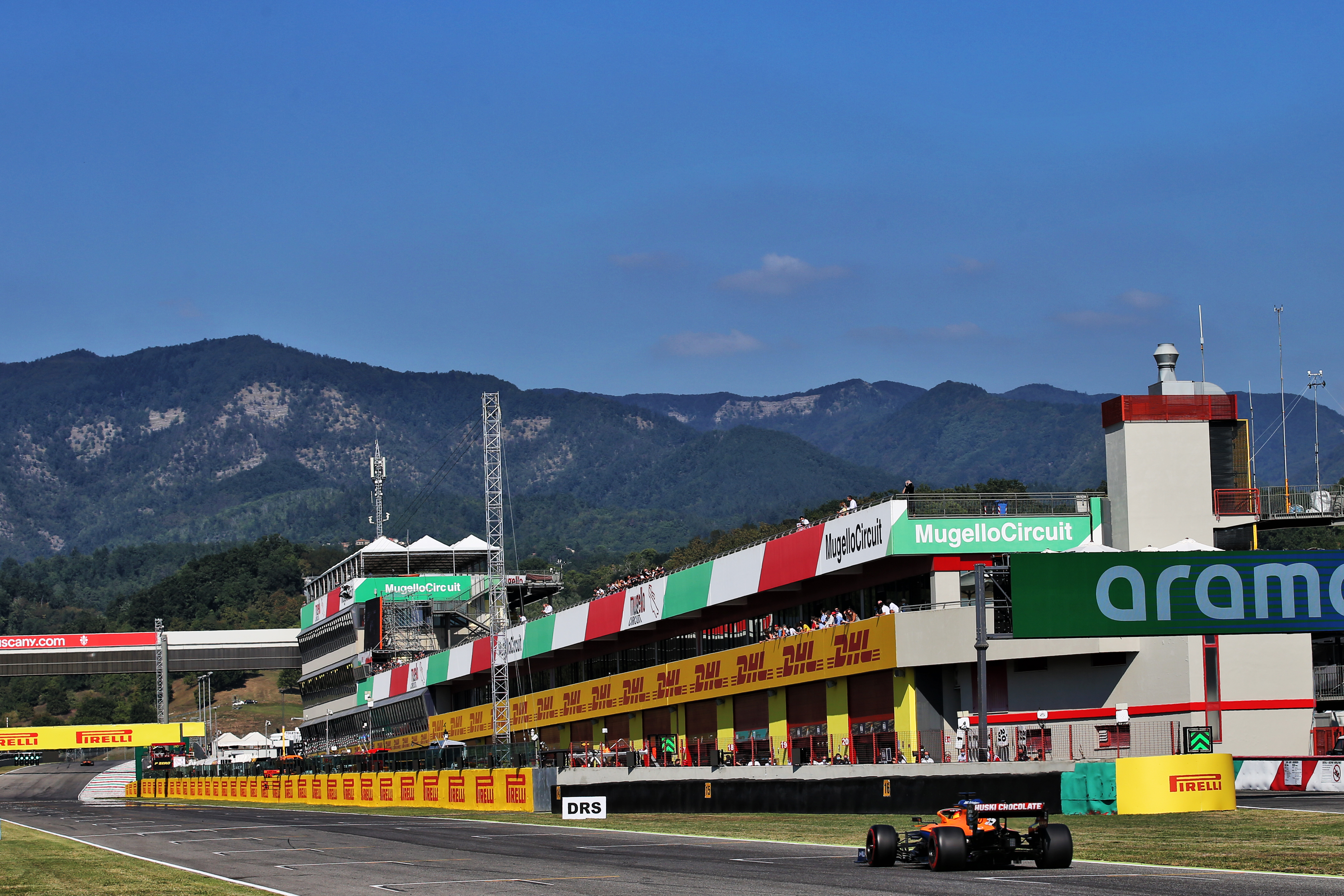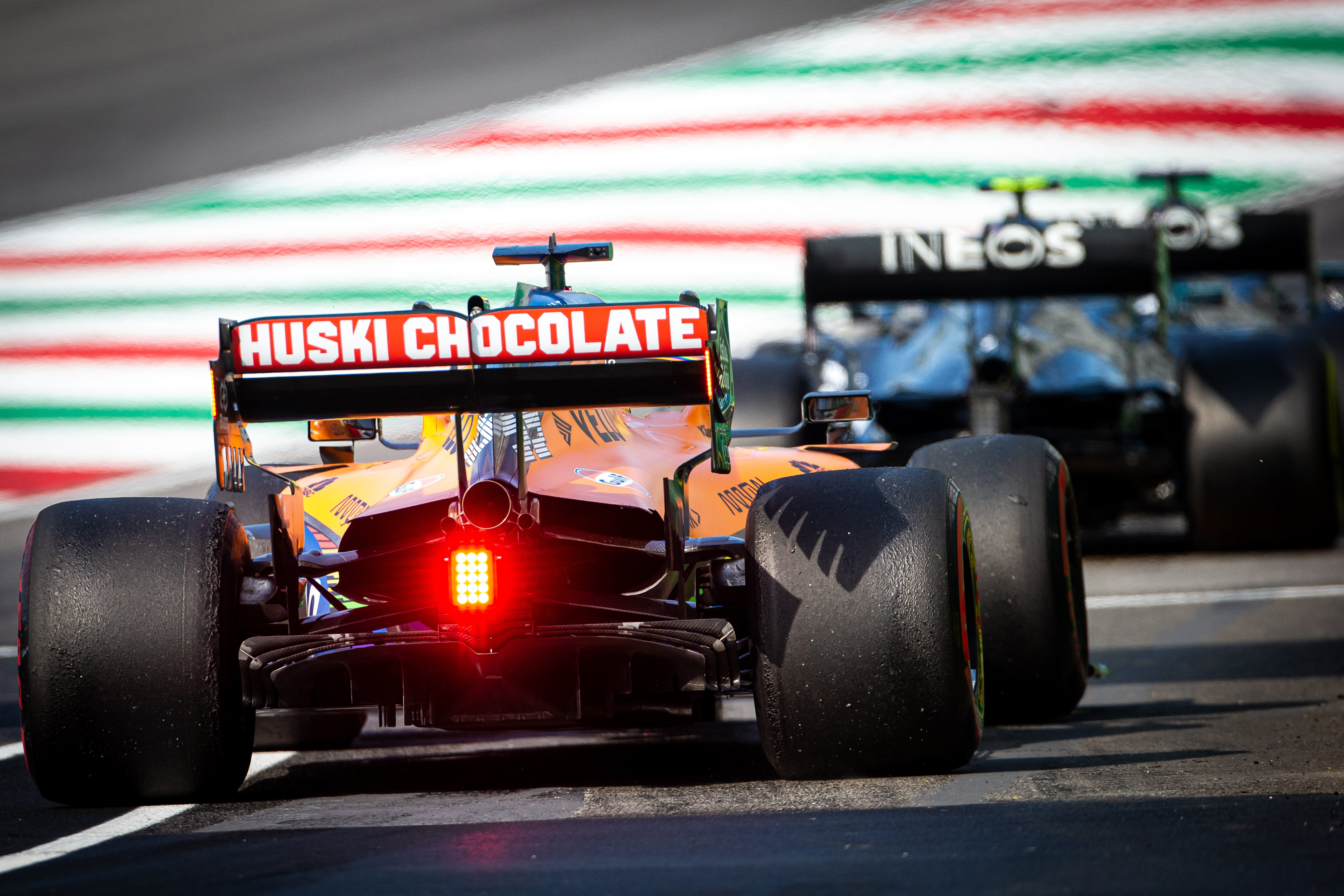Up Next

Between Mercedes/Red Bull at the front and the trio cast adrift at the back, McLaren, Racing Point, Renault, Ferrari and AlphaTauri are all taking turns to be third-fastest in Formula 1 this season.
And it’s taking very little for a team to fall from leading the chase of Mercedes to struggling to get out of Q2 – which was what McLaren experienced across the seven days from Monza to Mugello.
Edd Straw uses McLaren’s slump to explain the wild fluctuations in 2020 F1’s most intriguing fight.
McLaren went from, as team principal Andreas Seidl described it, “second-strongest force” on the Italian Grand Prix weekend at Monza to struggling to make Q3 at Mugello. Its fluctuating form is symptomatic of the midfield battle we’ve seen over the nine race weekends in 2020.
While McLaren holds third place in the constructors’ championship, albeit thanks to the 15-point deduction Racing Point was hit with for illegally-designed rear brake ducts, it was only the fourth-fastest of the midfield group at Mugello and arguably AlphaTauri had the underlying pace to be ahead had its drivers got the maximum from the car in qualifying.
McLaren’s performance improved as the Mugello weekend progressed. It struggled badly to find the right balance on Friday before Carlos Sainz Jr made it into Q3, with team-mate Lando Norris then looking a step closer again in the race and finishing sixth. While this was largely down to incidents that eliminated rivals, Norris did pass Ferrari’s Charles Leclerc.
“If you look back to where we started this weekend in terms of performance, we definitely made a step for qualifying and then also in terms of race pace we made another step,” said Seidl.
“We clearly had the Ferraris under control and we were not far off the Racing Point and even the Renaults. Of course, as soon as you’re stacked behind another car your pace goes down quite a bit, you damage your tyres and then it’s about surviving. But it was positive for us that we still scored eight important points for the constructors’ championship in such a difficult weekend.”

At the heart of the shift in McLaren’s position in the competitive order is the interaction of track performance sensitivities and the car characteristics. This has been the case all season with regular fluctuations in the midfield pack.
For the purposes of this article, Red Bull is not considered to be part of this midfield group as it is usually clear of it, although that is not always the case. On the Hungarian, 70th Anniversary and Italian Grand Prix weekends, Red Bull was outqualified by members of the midfield group, but on average it has been a step clear.
Instead, the key performance swings have been between McLaren, Racing Point, Ferrari and Renault, with AlphaTauri the occasional interloper.
If we look at who has led the way in terms of outright pace, based on the fastest individual time of each race weekend, and finishing position it’s clear how dramatic the fluctuations are. For the purposes of this discussion we’ve excluded Red Bull from the table as it’s usually ahead, but have indicated the occasions when it wasn’t.
| PACE | RACE | |
| AUSTRIA | McLaren | Ferrari |
| STYRIA | Racing Point | McLaren |
| HUNGARY | Racing Point* | Racing Point |
| BRITAIN | Ferrari | Ferrari |
| 70TH ANNIVERSARY | Racing Point* | Ferrari |
| SPAIN | Racing Point | Racing Point |
| BELGIUM | Renault | Renault |
| ITALY | McLaren* | AlphaTauri |
| TUSCANY | Renault | Renault |
Racing Point has most frequently led the way, although its strongest performances have generally been during qualifying. It has ‘won’ the midfield race in Hungary and Spain and it’s no coincidence that those are the two highest-downforce circuits F1 has visited so far this year.
McLaren has been a reasonably consistent performer in terms of pace, but is at its best at lower-downforce tracks. Monza was the calendar’s outlier – the lowest of the low in terms of downforce – and McLaren has generally been weakest when Racing Point is at its best.
In between, Ferrari has struggled at power circuits but was quick on the first Silverstone weekend thanks to nailing the downforce level compromise effectively – backing that up with some well-executed races at tracks where it wasn’t the best in the midfield. Renault, too, has performed well on the tracks of aero compromise at Spa and Mugello.

McLaren’s strength has been that it has a car capable of being in Q3 and scoring points everywhere – something it shares with Racing Point. That’s very positive for McLaren, which is on average the fourth-fastest car.
As the drivers explained on Saturday, there were other weaknesses that were exposed by Mugello. Norris pointed to a combination of the track surface and the wind conditions.
“Those two factors, mainly wind – it’s not one of our strengths,” he said when asked why McLaren struggled. “The car’s just been very unpredictable, changing lap on lap, not knowing really where the limit is and as soon as you go over it, it proves quite costly like it did on Friday [crashing in FP2].
“It’s the same for all teams. Everyone is finding it hard to understand, the tyres work differently for different teams and there were just a lot of unknowns for us and probably other teams on these different characteristics such as track surface, wind, kerbs – everything like that.”
Sainz explained that the struggles with tailwinds have been a problem for the team for some time. Throughout the Mugello weekend there was a northerly wind of varying intensity, which created a tailwind on the main straight.

“It’s been the same case with these cars since I arrived at McLaren,” said Sainz. “We feel like the car is very sensitive to tailwind mainly and very good in headwind corners.
“So once you get in a tow what you have is a lot more tailwind, you basically you have tailwind in every corner. That’s why in places like Monza we were talking about trying not to go in the tow because we felt that that generated tailwind in our car and we don’t like how that reacts.”
What Sainz says is true of all cars. McLaren is investing time into understanding this trait and whether it is more problematic for its cars than its rivals find.
As The Race’s technical expert Gary Anderson explains, this is a common problem but there are areas of fine detail where problems can arise.
“If McLaren’s aero package is more critical than others then any turbulence following another car or from tailwind, which basically loses you overall downforce, will hurt the grip levels,” says Anderson. “But I don’t see much on McLaren’s car that is more critical than others.
“But if you get into the detail of the interaction between the rear wing and the diffuser then that is something that could potentially explain it.
“Obviously, the gap between the wing and the diffuser is bigger when you are running smaller wings and generating less downforce. This can create a problem but that’s part of the small flap details along the top of the diffuser.”

As for the track surface, Mugello is unusual in that it’s a more old-fashioned track surface broadly akin to the one at Suzuka. While modern tracks are more uniform in terms of the overall surface, the one at Mugello is what might be called more granular.
This impacts the interaction of the tyres and the track surface and does present different challenges in the way the tyre is loaded, but it was something McLaren appeared to improve on as the weekend progressed.
But the primary reason for the fluctuations is simply how tight the midfield pack is. Mercedes is always the fastest car, therefore its slight variations in performance aren’t so obvious as it’s always at the front. But every car has its set of characteristics, strengths and weaknesses that will lead to the small swings that shuffle the pack.
What’s encouraging for McLaren is that, while it was never going to stay the second-strongest overall after Monza, it is the second-most consistent force in the midfield. And that’s a promising platform to build from even if Renault and Ferrari, at their best, can get ahead.




